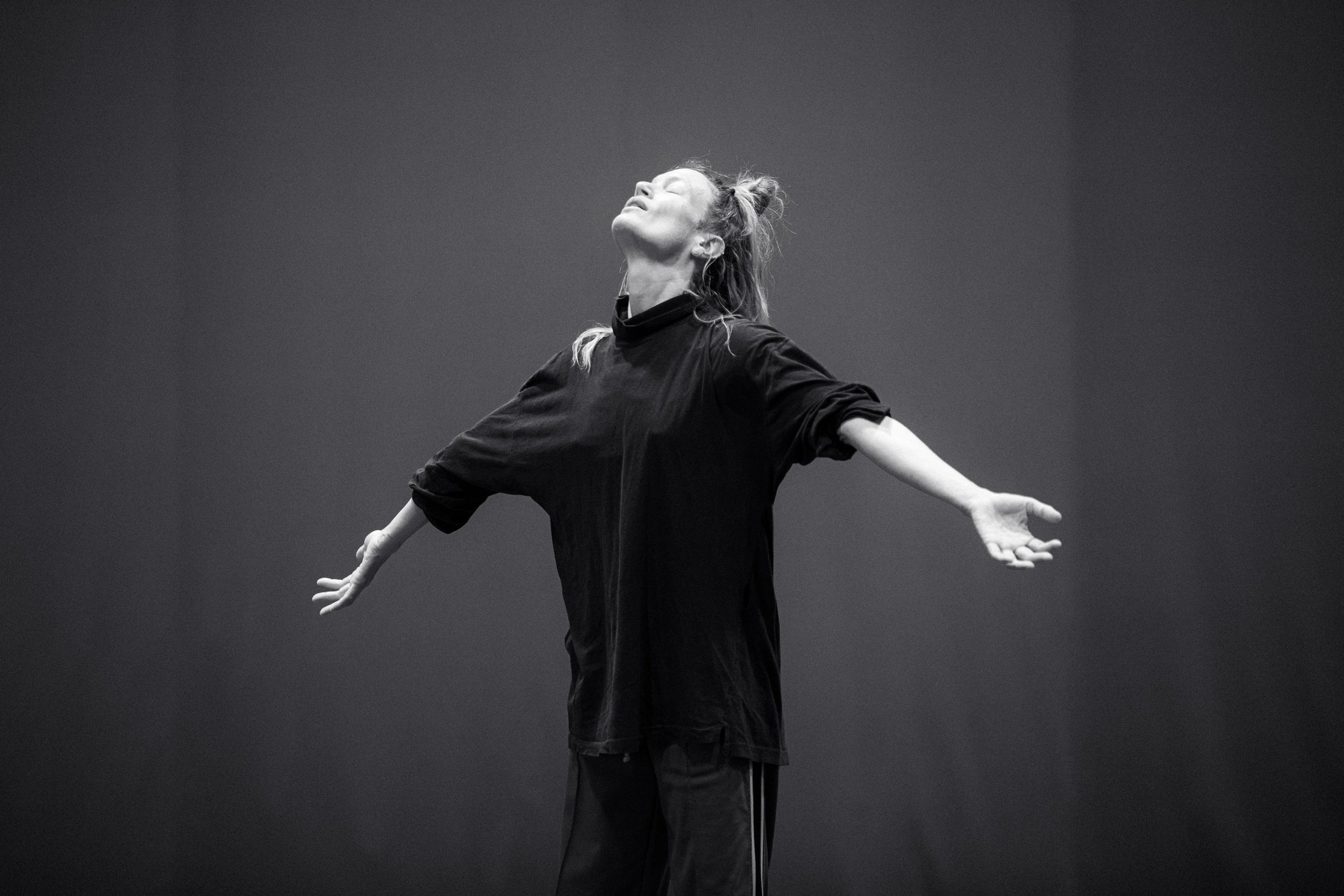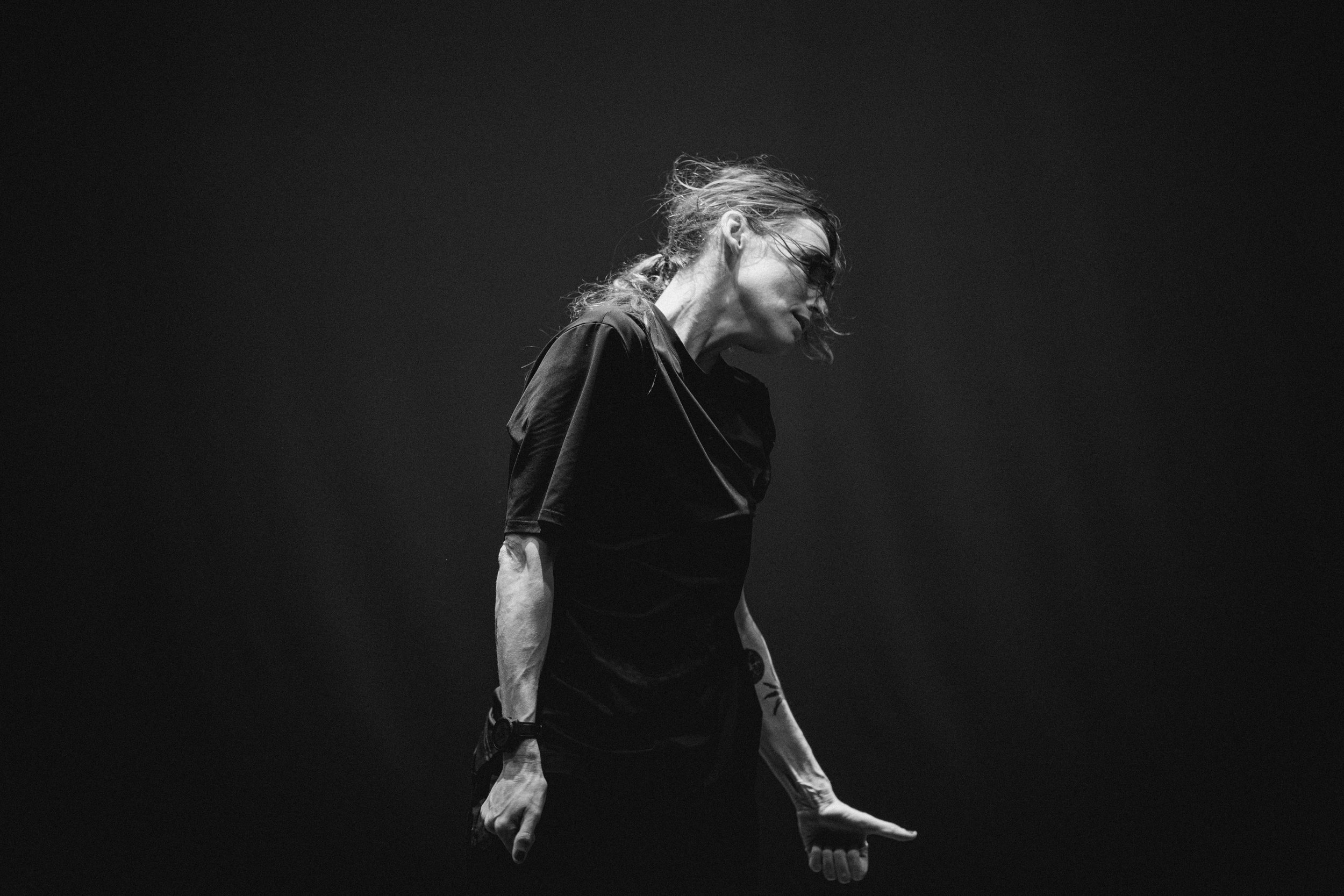FREEDOM SONATA (85’)
World Premiere Festival de Marseille, 20th and 21st of June 2024
“Everything that is, is of everything else that is,
nothing is of itself alone.”
2024 will mark 30 years of me having the privilege and joy of practicing the art of choreography.
I’ve created my first solo, ‘Four Dances’, in 1994 to music by Bach, and 30 years and more than 50 works later, I always have the feeling I’m just starting.
If I need to define what I’ve been working on in the course of these 30 years, it would be the refinement of a human system - as in, the ways in which individuals come together, access their highest potential, cohabit and collaborate.
THE WORK
Freedom Sonata is a free, contemporary take on the classic musical sonata form, evolving through three distinct choreographic movements.
The soundtrack for the work is a juxtaposition of two musical sources: Kanye West’s 2016 album The Life Of Pablo and L. V. Beethoven’s second movement from his last sonata #32. Played by Mitsuko Ushida and recorded in 2006.
‘Freedom Sonata’ is yet another chapter in an ongoing, continuous study into the ways in which groups, and the individuals that form them, behave, function and strive to find a state of balance and fulfillment. In that sense, it is of course a manner of looking at the way society - as we know it - organizes itself in different contexts and therefore, it can be seen as an exploration of possible alternative models.
‘Freedom’, the term and concept, is probably the most abused, misused and misunderstood word that exists. The truth of the matter is, that nothing is easier than stripping people down from any sort of freedom, liberty or natural right. Choreography making can serve as a space to examine how to solve the internal tension between the individual and the collective, what type of authority can serve as a positive driving force and which as a destructive one. And so, when asked if my work is political, my answer is that my work is not political, but the way in which I work, IS.
If I look at my work from an anthropological angle, as in, a process of thinking about and actively examining questions such as: models for groups organisation, governance modalities and political structures, economic models, resources management and so on, the way I would define it then would be something along these lines:
A commitment, through a choreographic practice, to the idea that it can be possible to have a society based on principles of self organization, voluntary association and mutual aid.
Decentralizing the conventional structure of hierarchies between choreographer and dancers, rethinking the distribution of power and responsibilities, coming up with new ways of defining what choreography/ dance making can actually be and changing the established paradigms by placing individual freedom at the center as a core value of dance making, are the most valuable strategies through which dance can become a relevant force in pointing out societal anomalies and proposing alternatives.
THE MUSIC
Kanye West
The Life of Pablo is the seventh studio album by American rapper and producer Kanye West. It was released on February 14, 2016.
I came late to the music of Kanye West. It has been only during the last three years, that I dove deeply into his work, with a growing admiration to what I consider now to be one of the most important, creative and innovative musical artist of the past two decades.
The Life of Pablo was noted for its “raw, occasionally even intentionally messy, composition, designed to sound like a work in progress”.
West described the music on The Life of Pablo as “The gospel according to Ye”.
“Constantly veering between swaggering bravado and insecurity bordering on paranoia, smashing the sacred against the profane and disrupting his own flowing grooves with interjections”, The Life Of Pablo has “perfected the art of aesthetic and intellectual bricolage, shape-shifting in real time and counting on listeners to keep up”.
It’s undeniably the work of one of music’s most boundary-pushing artists.
L.V. Beethoven
Piano Sonata No. 32 in C minor, Op. 111 (second movement, Arietta: Adagio molto semplice e cantabile), is the last of Ludwig van Beethoven’s piano sonatas. This will be the fourth time I include this masterpiece of the piano repertoire in the soundtrack of one of my pieces.
The work was written between 1821 and 1822. The second movement is marked as an arietta with variations. Thomas Mann called it “farewell to the sonata form”. Rhythmically visionary and technically demanding, it is one of the most discussed of Beethoven’s works. The sonata was one of Beethoven’s last compositions for piano. Nearly ignored by contemporaries, it was not until the second half of the 19th century that it found its way into the repertoire of most leading pianists.
The second movement include sections of dance-like character and heavy syncopation. Mitsuko Ushida has remarked that this variation, to a modern ear, has a striking resemblance to cheerful boogie-woogie and the closeness of it to jazz and ragtime, which were still over 70 years into the future at the time, has often been pointed out.
Alfred Brendel commented of the second movement that “what is to be expressed here is distilled experience” and “perhaps nowhere else in piano literature does mystical experience feel so immediately close at hand”.
CREDITS
Freedom Sonata
Estimated length: 85 minutes – no intermission.
Choreography, scenography and lights: Emanuel Gat
Music:
Kanye West - The Life Of Pablo (2016)
Ludwig Van Beethoven – piano sonata #32 Ut minor opus 111, second movement, played by Mitsuko Ushida and recorded in 2006.
Created with and interpreted by: Tara Dalli, Noé Girard, Nikoline Due Iversen, Pepe Jaimes, Gilad Jerusalmy, Olympia Kotopoulos, Michael Loehr, Emma Mouton, Abel Rojo Pupo, Rindra Rasoaveloson, Sara Wilhelmsson.
Technical director: Guillaume Février
Sound design: Frédéric Duru
Production: Emanuel Gat Dance
Company manager: Marie-Pierre Guiol
Production management: Mélanie Bichot
Coproduction: Festival de Marseille 2024, Théâtre de la Ville Paris, Sadler’s Wells London, Torino Danza, Festspielhaus St Pölten, Concertgebouw Bruges – Festival December Dance, Comédie de Genève, Grand Théâtre de Provence, in progress.
With the support of Pôle Arts de la scène.
Decor creation: Ateliers de la Comédie de Genève
Creation residencies: KLAP Maison pour la Danse, SCENE44 . n + n Corsino, Grand Théâtre de Provence.
Emanuel Gat Dance benefits from the support of the Ministry of Culture and Communication - DRAC Provence-Alpes-Côte d'Azur as an approved company, the South Region - Provence-Alpes-Côte d'Azur and the Conseil Départemental des Bouches de Rhône.
Photos © Julia Gat 2024



